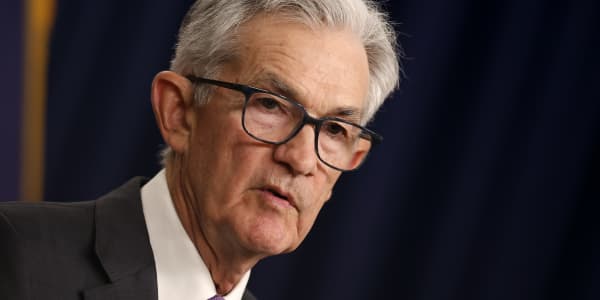This report is from today's CNBC Daily Open, our new, international markets newsletter. CNBC Daily Open brings investors up to speed on everything they need to know, no matter where they are. Like what you see? You can subscribe here.
The bank rout continues.
What you need to know today
- Bank stocks had a very, very rough Monday in the aftermath of Silicon Valley Bank's implosion, even after the Federal Reserve offered additional funding to banks.
- Investors beware — though financial regulators made sure depositors in SVB and Signature Bank could withdraw their money, President Joe Biden didn't have much sympathy for the banks' investors. "Investors in the bank will not be protected," Biden said in a White House speech. "That's how capitalism works."
- Overall, U.S. stocks had a mixed Monday. The Nasdaq Composite was the only major index to close higher. European markets were rocked by SVB's collapse. Stoxx 600 fell 2.58%, weighed down by bank stocks, which sank 5.65%.
- The yield on the 2-year Treasury dropped to 4.016%. On Wednesday, it was 5.06%. That's a full percentage point drop, the largest three-day decline since the "Black Monday" of 1987 when the S&P 500 plunged 20%. Investors are swarming into bonds, pushing yields down, as they seek safer assets amid contagion across the banking sector.
- PRO Why was SVB the first bank (discounting Silvergate, a crypto-focused bank) to collapse from higher interest rates? This chart shows the bank's unique spread of assets and how it set itself up to fail.
The bottom line
A joint guarantee by the Federal Reserve, the Treasury Department and the Federal Deposit Insurance Corporation wasn't enough to stop the bank rout.
Regional banks were hammered by the second- and third-largest bank collapses in U.S. history. The biggest losers: First Republic Bank plunged 61.83%, Western Alliance Bancorp plummeted 57.06% and KeyCorp sank 27.33%. Trading was so volatile that many bank stocks had to be halted throughout the day. Bigger banks weren't left unscathed. Bank of America tumbled 5.81% and Charles Schwab sank 11.57% even as the Schwab sought to reassure fears, saying it has "access to significant liquidity."
The Dow Jones Industrial Average lost 0.28%, its fifth straight day in the red, and the S&P 500 fell 0.15%. But those are minor declines compared to the pounding the banking sector took, suggesting the broader economy is still in good shape. Indeed, the Nasdaq Composite bucked the trend to add 0.45%. Take the pharmaceutical industry, which rose on the news that Pfizer's acquiring Seagen, a developer of cancer therapy, at $43 billion. Seagen jumped 15% while Pfizer gained 1.5%. Pharmaceutical companies not involved in the deal, such as Moderna, Johnson & Johnson and Eli Lilly, also benefited from this sign of life outside the banking sector.
And now for the bad news. Despite the turmoil in the banks, markets and analysts expect the Fed to go through with rate hikes. If the Fed pauses, it would "invite markets and the public to assume that the Fed's inflation fighting resolve is only in place up to the point when there is any bumpiness in financial markets or the real economy," explained Citigroup economist Andrew Hollenhorst. (Goldman Sachs' prediction the Fed would stay its hand, as I mentioned yesterday, is a rare exception.)
A better indicator of rates' trajectory would be the consumer price index coming out later today. For now, the banking sector's crisis seems contained — hopefully.
Subscribe here to get this report sent directly to your inbox each morning before markets open.





